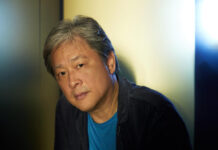The 29th International Congress of Mathematicians is being held from July 6 to 14, in a reduced format and mainly by videoconference, in Helsinki – the holding of the event in Saint Petersburg was canceled following the invasion of Ukraine by Russia. “There was a consensus in the community not to organize this conference in Russia,” recalls Hugo Duminil-Copin, the new French winner of the Fields Medal, awarded every four years at this congress and endowed with 15,000 Canadian dollars ( around 11,000 euros).
“Once again a French mathematician has enriched the collection of our awards. This obliges us to remain attractive to high-level scientists, if we want this to continue”, greets Sylvie Retailleau, Minister of Higher Education and Research.
In addition to this 36-year-old probabilist, professor at the Institute for Higher Scientific Studies (IHES, in Bures-sur-Yvette) and at the University of Geneva, is rewarded a 37-year-old Ukrainian, Maryna Viazovska, professor at the School Federal Polytechnic of Lausanne (EPFL). She is only the second woman to receive this award, out of 62 men. The first, Iranian Maryam Mirzakhani, medalist in 2014 died three years later.
American June Huh, 39, from the Institute for Advanced Study (IAS), Princeton, and Briton James Maynard, 35, from Oxford University, complete the list.
Maryna Viazovska left Ukraine in 2010 for Germany, where she completed her thesis under the supervision of Don Zagier and Werner Müller at the University of Bonn. After postdocs in Berlin and Princeton, she was recruited by EPFL in 2016, to the chair of arithmetic the following year. His prize rewards in particular two demonstrations on the best way to stack spheres, that is to say the one being the most compact. If the solution is known in three dimensions, a pyramid, as the market gardeners do on their stall, it was not in higher dimensions. Worse, while the “pyramid” remains a solution in dimensions 4, 5 and up to 7, this is no longer the case in dimension 8.
Spheres and spaces
Everything happens as if by increasing the dimensions, the spaces between spheres became large enough to accommodate other spheres. The recipe in dimension 8 is called E8, the name of a well-known group, which only Maryna Viazovska showed, in 2016, that it represented the best solution. Seven days later, with other colleagues, she posted another article showing that in dimension 24, too, the pyramid is not optimal. In 2019, with these same colleagues, she generalized the result by showing that E8 also represents an optimal way of arranging points in space. Before the Fields Medal, she had received many distinctions such as the Salem Prize (2016), the New Horizons Prize (2018), the European Mathematical Society Prize (2020).
James Maynard owes his reward to the resolution of several mysteries on the distribution of prime numbers. In 2013, while in postdoc at the University of Montreal, the Brit demonstrated that there is an infinity of pairs of successive prime numbers, between which the difference is at most 600. Thanks to the collaborative project Polymath, he drops this number to 246. But to demonstrate one of the Holy Grails of this discipline, the infinity of so-called “twin” prime numbers separated by two units, “it will take a great new idea”, estimates the mathematician, who, in 2019, has also showed the existence of an infinity of prime numbers not having 7 in its decimal notation (or any other integer in fact).
Finally June Huh, born in California to parents of South Korean origin, grew up in South Korea. Dreaming of a career as a poet or journalist, he discovered mathematics in his twentieth year, after meeting the Japanese Heisuke Hironaka in Korea, Fields medalist in 1970. Then he left for the United States in 2009 for the University of Illinois and defended his thesis at the University of Michigan, before joining the prestigious Institute for Advanced Study (IAS), in Princeton, in 2017. The Fields Medals jury recognizes him for no less than three demonstrations of conjectures at the crossroads of geometry and combinatorics, this science of counting objects. “I create spaces from combinatorial objects. Then I circle around these spaces and use my geometric intuition to extract information hidden in the initial combinatorial structure,” he explains. In particular, he demonstrated analogues of Euler’s famous formula, which relates the number of edges, vertices and faces of a polyhedron.














